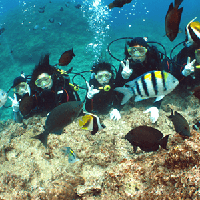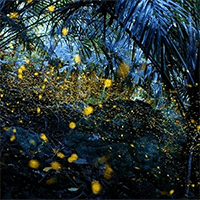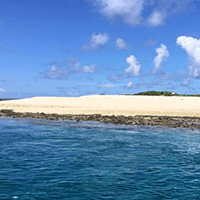- Age 0~Age 99
- 2~3 hours
The origin of Awa Washi has a history of about 1300 years ago, when people who served in the imperial court called the Inbe tribe planted hemp and kozo to make paper and cloth. .. As a "maker of new materials", "Awagami Factory", which has released Japanese paper from the world of "tradition" and is developing various techniques and researching materials, has developed Japanese paper that can be printed by inkjet, and the world. It is evaluated as a high quality paper so that the artists inside visit it to use it in their works. After learning how to make paper by a Japanese paper craftsman, you can print your favorite photos and memory data on Japanese paper to make a work. ~ Flow of the day ~ 1.1 About the history of Awa Japanese paper for 300 years 2. Tour of the production site of Japanese paper craftsmen 3. Experience of making original handmade Japanese paper 4. Print your favorite photo data on Japanese paper Awa Japanese paper print of photo data with souvenirs (shipped at a later date)
- Age 10~Age 100
- 1~2 hours
- 10:00 / 14:00
Why do not you experience the painting of Hakata Jukyusen? At the home town hall, under the craftsmen, painting experience has become easy to do. How about touching Hakata's tradition and making memories?
- Age 10~Age 100
- 1~2 hours
- 10:00 / 14:00
Why do not you have a painting experience by Hakata Zagako? At the home town hall, under the craftsmen, painting experience has become easy to do. How about touching Hakata's tradition and making memories?
- Age 4~Age 100
- 1~2 hours
A top-of-the-frame painting experience that even beginners can easily enjoy! Let's make your own piece with a free sense. A skull pattern is also possible. You can experience it from a 4-year-old child. Please make one per person. Tools are available here. Works On the day You can take it home.
- Age 5~Age 100
- Within 1 hour
- 11:00
Approximately 70% of domestic incense sticks are manufactured on Awaji Island. Among them, the Ei district is where many manufacturers gather, and you can smell the delicious aroma of incense as you walk through the town. It has even been selected as one of the "100 Scented Landscapes" by the Ministry of the Environment. This is a valuable experience where you can visit an incense manufacturer that has been manufacturing incense since 1905 and still maintains traditional handmade manufacturing methods, learn about the history of Awaji Island incense sticks, knowledge of fragrance, and the manufacturing process from a fragrance master called a "Koshi", and experience part of the manufacturing process while receiving a lecture from a veteran craftsman. After learning the basics of incense from a fragrance master called a "Koshi" at an incense manufacturer on Awaji Island, which accounts for approximately 70% of the domestic incense market, you will receive a lecture from a veteran craftsman and experience part of the actual manufacturing process. It is a valuable opportunity to listen to the craftsman's story! *The experience will involve cutting the sticks into bonkiri (a bonkiri stick) and putting them raw on the sticks.
- Age 5~Age 100
- 1~2 hours
- 11:00
Approximately 70% of domestic incense sticks are produced on Awaji Island. Among them, the Ei district is where many manufacturers gather, and you can smell the delicious aroma of incense as you walk through the town. It has even been selected as one of the "100 Scented Landscapes" by the Ministry of the Environment. Visit an incense manufacturer that has been producing incense since 1905 and continues to produce it by hand, learning about the history of Awaji Island incense sticks, knowledge of fragrance, and the manufacturing process from a fragrance master called a "Koshi", and experiencing making your own original incense. After learning the basics of incense by visiting a manufacturer of incense sticks on Awaji Island, which accounts for approximately 70% of domestic incense sticks, and learning about the history and knowledge of fragrance of Awaji Island incense sticks, as well as the traditional manufacturing process, it's time to make your own incense! Choose the color of the incense, put the ingredients and water in a mortar and knead. Blend your favorite fragrances and knead again, then use a die to shape the incense. Take it home and let it dry thoroughly for about a week, and your incense is ready! You can experience making your own scent at home. [Experience Schedule] 11:00 Meeting Observe the traditional incense manufacturing process at Awaji Umekundo Ei Factory (30 minutes) 11:30 Learn about the history of incense and fragrance knowledge from a Kohshi (producer) and experience making incense (80 minutes) 12:50 Scheduled to end
- Age 5~Age 100
- 1~2 hours
- 11:00
Approximately 70% of domestic incense sticks are produced on Awaji Island. Among them, the Ei district is where many manufacturers gather, and you can smell the delicious aroma of incense as you walk through the town. It has even been selected as one of the "100 Scented Landscapes" by the Ministry of the Environment. Visit an incense manufacturer that has been producing incense since 1905 and continues to produce it the traditional way, learning about the history of Awaji Island incense sticks, knowledge of fragrance, and the manufacturing process from a fragrance master called a "Koshi", and experiencing making your own original sachet. After learning the basics of incense by visiting an incense manufacturer on Awaji Island, which accounts for approximately 70% of the domestic incense market, and learning about the history of Awaji Island incense stick production, knowledge of fragrance, and the traditional manufacturing process, you can finally experience making an incense sachet. You can mix your favorite fragrance ingredients and make an original sachet to put in your favorite sachet, and enjoy the scent at home. [Experience Schedule] 11:00 Meeting point Observe the traditional incense manufacturing process at Awaji Baikondo Ei Factory 11:30 Learn about the history and scents of incense from a Kohshi (producer) and experience making a scented sachet (50 minutes) 12:20 Scheduled end
- Age 10~Age 100
- 4~5 hours
First, you will observe the making of a Japanese sword (forging) for about an hour. After that, you will create a small knife under the guidance of a swordsmith who has inherited the art of making Japanese swords. The "Small Knife Making Experience" has been running for over 10 years. During that time, hundreds of people have tried it, and we have improved it to give you a better experience of blacksmithing. Everyone is worried, thinking "It looks difficult" or "Can I do it?" but don't worry. I'll be there with you. I'll fully support you! Experience the excitement of seeing your first small knife completed!
- Age 13~Age 100
- 3~4 hours
- 10:00
With a history of 1400 years, tiles have protected Japanese houses, including shrines and temples. Among them, there are "Onishi" who have the skills of a master craftsman who draws a blueprint in his head while looking at the drawing with his own eyes without using blueprints or molds, and finishes it only with the sense of his fingertips and a handmade spatula. You can make a one-of-a-kind oni tile by learning from an "Onishi" how to make oni tile by hand using "name-do" soil that is more than 2 million years old. Awaji Island is one of the three major production areas of tiles in Japan, and is the number one producer of smoked tiles that shine with "silver". Tiles have a history of more than 1400 years, and tile making has been going on in Awaji Island for more than 400 years. Moreover, the soil used for Awaji tiles is still more than 2 million years old, and the very fine particles of "name-do" are used to create smoked tiles that shine with a beautiful silver color by baking (smoking) them in a kiln. In Japan, onigawara tiles have been used to decorate roofs as a talisman since ancient times. Even today, these onigawara tiles are carefully handcrafted by oni-shi (demon craftsmen) without the use of machines. Normally, you don't get to see onigawara tiles being made, but in this experience, you can watch the onigawara craftsmen's skills up close and make onigawara tiles together. Since this experience is limited to one group, you can make onigawara tiles without worrying about other people. If you have any questions or questions about how to make them, you can ask the onigawara maker at any time, and it is an experience where you can experience traditional techniques in a private atmosphere. [Procedure] 1. Draw a rough sketch of the image (you can also bring a draft with you) 2. Decide on the design of the onigawara tile 3. Together with the onigawara maker, use tile clay (nametsu) to create a rough shape 4. Let it cure (eat lunch (each person) during this time) 5. Finish the fine details using a spatula and your fingertips 6. Completed (you can also take a commemorative photo with the onigawara maker) *The work will then be carefully dried and fired and delivered in about two months. *For lunch, you can enjoy Awaji Island's specialty "Kawara-yaki" at the facility (additional charge required).
- Age 5~Age 100
- 2~3 hours
All wind-chimes ring beautifully, but Niigata is especially famous for its crystal fuurin. The sound of these wind-chimes is clearer and louder than those made of regular glass. See for yourself, by joining us in making this amazing household decoration. This will be an unforgettable experience, especially since you will have the wind-chime to take home and remind you of it!
- Age 10~Age 80
- 1~2 hours
It is a work made by three-dimensionally combining flowers and animals using kimono fabric and cotton. Kits and tools will be prepared here in advance, so you can participate empty-handed on the day. If you have a request, we will also hold a business trip class at your accommodation.
- Age 6~Age 100
- 1~2 hours
Would you like to make your own Kimekomi work? We will prepare the bare wood in a carved state in advance, so you can make your own product just by choosing your favorite cloth and applying the wood grain. Experience the "Paulownia Kimekomi Zaiku" that can only be experienced at Hakocho. We will prepare a box that has already undergone the "carving" process, so you can freely choose the fabric yourself, and then "color" and "kimekomi".
- Age 6~Age 70
- 1~2 hours
- 10:00 / 13:30 / 15:30
Snowy winter in Tohoku and Akita. "Straw work" has been done for winter handicrafts every day when I lived with my family in the hearth. Let's make "Shimenawa" used for special ceremonies from daily use such as pots.
- Age 6~Age 70
- 1~2 hours
- 10:00 / 13:30 / 15:30
Kakunodate, a small Kyoto in Tohoku, famous for its samurai residences. Let's make a "charcoal bale" to be used at the "Fire Swing Kamakura" event that is held every winter during the First Full Moon Festival. For the work of knitting, select straw and stack it in order. After knitting, roll it up, arrange it, and attach a rope string to swing it around.
- Age 6~Age 100
- 2~3 hours
- 10:00 / 14:00 / 16:45 / 18:20
"Yu Kobo" opens 6 classrooms in Tokyo, Nagoya, Osaka and Fukuoka. Bright and friendly professional staff will help you together according to the speed of each person. ☆ You can enjoy your time at home with the finished Japanese paper lamp ♪ Paste Japanese paper on the inflated balloon to make a balloon-shaped round lighting. By pasting colored Japanese paper or octopus thread, an expression is created in the light. Home time is colored with soft light. ☆ You can take the completed work home on the day of the experience. ☆ If you have any concerns about the production of your work, please feel free to contact us.
最近チェックしたプラン
Please wait a moment
![[Tokushima / Yoshinogawa City] With special memories in Japan's oldest Japanese paper, "Awa Washi", which boasts a history of 1300 yearsの画像](https://img.activityjapan.com/10/36452/10000003645201_ygFvU1X1_3.jpg?version=1622880755)
![[Fukuoka / Hakata] Experience Hakata's traditional crafts-Hakata top painting experience- (held on Wednesday)の画像](https://img.activityjapan.com/10/17037/10000001703701_4NMzADtU_3.jpg?version=1641711425)
![[Fukuoka / Hakata] Experience Hakata's traditional crafts-Hakata Hariko painting experience- (held on Tuesday)の画像](https://img.activityjapan.com/10/17036/10000001703601_2ECAksi7_3.jpg?version=1641711126)
![[Iwate/Morioka] Experience traditional crafts! "Picture painting experience" empty-handed OK! You can participate from 4 years old!の画像](https://img.activityjapan.com/10/11764/10000001176401_JEhSjMW3_3.png?version=1579482202)
![[Awaji, Hyogo] Learn from active craftsmen of a manufacturer that preserves traditional handmade manufacturing, and experience some of the processes involved in making incense, a traditional industry on Awaji Island, in a town of incense that has continued since the Edo period.の画像](https://img.activityjapan.com/10/58861/10000005886101_nXyAW2Zv_3.webp?version=1745205481)
![[Awaji, Hyogo] Learn about the history and basics of fragrance from a fragrance master in this town of incense that has been around since the Edo period, and create your own original incense by choosing the scent and shape.の画像](https://img.activityjapan.com/10/58859/10000005885901_nXyAW2Zv_3.png?version=1745203267)
![[Hyogo/Awaji] Learn all about fragrances and then make your favorite scented sachet at an incense manufacturer that preserves traditional handmade manufacturing.の画像](https://img.activityjapan.com/10/58819/10000005881901_nXyAW2Zv_3.png?version=1744872913)
![[Hyogo, Aioi] Experience making a small steel sword and observe the making of a Japanese sword (forging)の画像](https://img.activityjapan.com/10/57225/10000005722501_tUytNN5L_3.JPG?version=1744950544)
![[Hyogo, Minami Awaji] Try your hand at making onigawara tiles, a tradition that has continued for over 400 years! Learn from a master craftsman, the oni-shiの画像](https://img.activityjapan.com/10/58778/10000005877801_1Gz5AIDf_3.webp?version=1744699742)
![[Niigata / Furumachi] Make a wind-chime and take a tour of the factoryの画像](https://img.activityjapan.com/10/35818/10000003581801_4MfZZSjz_3.jpg?version=1612506840)
![[Wakayama/Izumi City Neighborhood Area] Easy Oshie experience class of "Japanese traditional craft Oshie" made by overseas travelers and parents and childrenの画像](https://img.activityjapan.com/10/50021/10000005002101_atFOJjl6_3.jpg?version=1691041082)
![[Tokyo Asakusa] Experience traditional culture with your family ♪ Only in Japan! Kiri Kimekomi work experience!の画像](https://img.activityjapan.com/10/45347/10000004534701_etu7Tm6u_3.png?version=1668748868)
![[Akita / Kakunodate] Traditional event! You can take the finished product home! Straw work!の画像](https://img.activityjapan.com/10/37046/10000003704601_4O2kc0AC_3.jpg?version=1639034645)
![[Akita / Kakunodate] Traditional event! Making Kakunodate fire-shaking kamakura charcoal bales! The instructor will teach you carefully!の画像](https://img.activityjapan.com/10/37045/10000003704501_4O2kc0AC_3.jpg?version=1620621339)
![[Tokyo Ginza] Lighting craft one day experience ☆ Comfortable life starting with handmade ♪ Warm indirect lighting of Japanese paper ☆の画像](https://img.activityjapan.com/10/23308/10000002330801_lJCLBiQV_3.JPG?version=1626592942)







